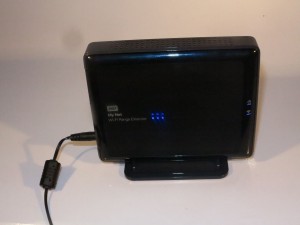Just lately, we are starting to see the arrival of HomePlug AV2 powerline network technology in the form of network-connectivity devices. This is now due to the standard being “set in stone” and the chipset manufacturers running significant quantities of the circuitry required for these devices.
It will initially come in the form of the typical “homeplug” which is a Ethernet bridge which is able to connect one Ethernet device to a powerline segment based on this technology. But as it evolves, expect to see the access points, multiple-Ethernet-connection switches, routers and the like appear.
Devices that are based on this technology could lead to a more reliable HomePlug powerline segment. It will underscore the flexibility that this powerline-network technology is all about in a lot more applications including multiple-building home networks and use in commercial properties.
In this report, when I am talking of HomePlug AV, I talk of the 200Mbps original HomePlug AV technology whereas when I talk of HomePlug AV500, I talk of the 500Mbps HomePlug AV / IEEE 1901 technology that has been recently issued. Both of these are compatible with each other but work at the speed of the lowest technology.
Key features for a robust HomePlug AV2 segment
HomePlug AV2 has been provided with a slew of improvements that deal with tricky applications of this technology and provide for increased network reliability.
One user group that may benefit would be anyone who has anything to do with commercial-type premises or large multiple-tenancy buildings. Here this could be someone who is setting up a temporary or semi-permanent wired network for something like a POS system or a network printer or a situation where one moves in to a building where cost or lease / occupancy conditions preclude the installation of new Ethernet cabling.
Each HomePlug AV2 device is a repeater
With HomePlug AV2, each device that is part of the same Segment also works as a repeater which improves signal reliability across the HomePlug AV2 segment. This effectively “boosts” the data stream across the AC wiring thus improving signal-noise ratio with environments that have increased device noise; or long-wire links like between buildings.
This may avoid the need to create an extra HomePlug AV segment and linking this via Ethernet to the existing HomePlug AV segment in order to “push out” data over a long inter-building electrical run.
Use of the three AC wires rather than two
Similarly, HomePlug AV2 setups make use of the earth (ground) wire along with either the live (active / line) or neutral wires as part of creating alternative wire pairs for data transfer. This is compared with HomePlug AV and IEEE 1901 (HomePlug AV500) which uses just the power-wire pair (live and neutral wires). It allows for alternative reduced-noise paths to be used for HomePlug AV2 segments which can be a bonus with commercial and industrial environments.
Multiple In Multiple Out technology
This feature extends to implementation of Multiple In Multiple Out technology, commonly used with 802.11n and 802.11ac Wi-Fi wireless networks. In this application, data can be sent along two or more of the three wire pairs at the same time to provide increased reliability and link speed. This is leading to an “on-paper” link speed of nearly 1000Mbps or “gigabit” throughput, which is why a lot of these HomePlug AV2 devices will implement Gigabit Ethernet as their Ethernet connections.
Of course, there will be a fallback to 500Mbps theoretical link speed for SISO links implemented mainly with some first-generation or cheaper HomePlug AV2 devices and with “power-wires-only” links like inter-building runs. This is due to the fact that each building will most likely have its own earth point for its AC supply.
Other technologies like “efficient notching”, wider media bandwidth and improved modulation also create increased robustness and data-transfer efficiency in the HomePlug AV2 link.
Power-efficient HomePlug AV2 hardware
The implementation of “HomePlug Green PHY” technologies which implement sleep mode and beacon-driven wake activity allows for the HomePlug AV2 devices to be increasingly power-efficient.
This matters more if you simply deploy one or more of these devices as simple “infill” repeaters or as network off-ramps that serve other segments or devices. It will also benefit low-traffic HomePlug AV2 segments which have to be available but don’t see consistent use.
Implementation issues
HomePlug AV2 devices can exist on the same logical HomePlug segment as HomePlug AV or HomePlug AV500 devices and will typically use the “Simple-Connect” push-button setup routine that is now common.
A question that is yet to be answered is whether HomePlug AV2 devices will bring the same kind of robustness to a segment that is made up primarily of HomePlug AV or AV500 devices. This encompasses availability of data from network clients connected to HomePlug AV2 devices at clients connected to HomePlug AV devices and vice versa.
If you are offered that first-generation HomePlug AV2 “single in single out” device which runs a 500Mbps link. you may think that you could cut it cheaper with a HomePlug AV500 device. The HomePlug AV2 device may be more relevant for those of you who want increased reliability when establishing a HomePlug powerline segment in commercial premises, linking outbuildings or funky old “sleepout” caravans to the home network using the AC wiring or facing a troublesome HomePlug powerline segment.
HomePlug AV2 is definitely a technology worth looking forward to for more than just the regular suburban home. It is something that underscores the powerline network’s flexibility as a “wired no-new-wires” network in a more robust way as well as adding data throughput to this technology.

